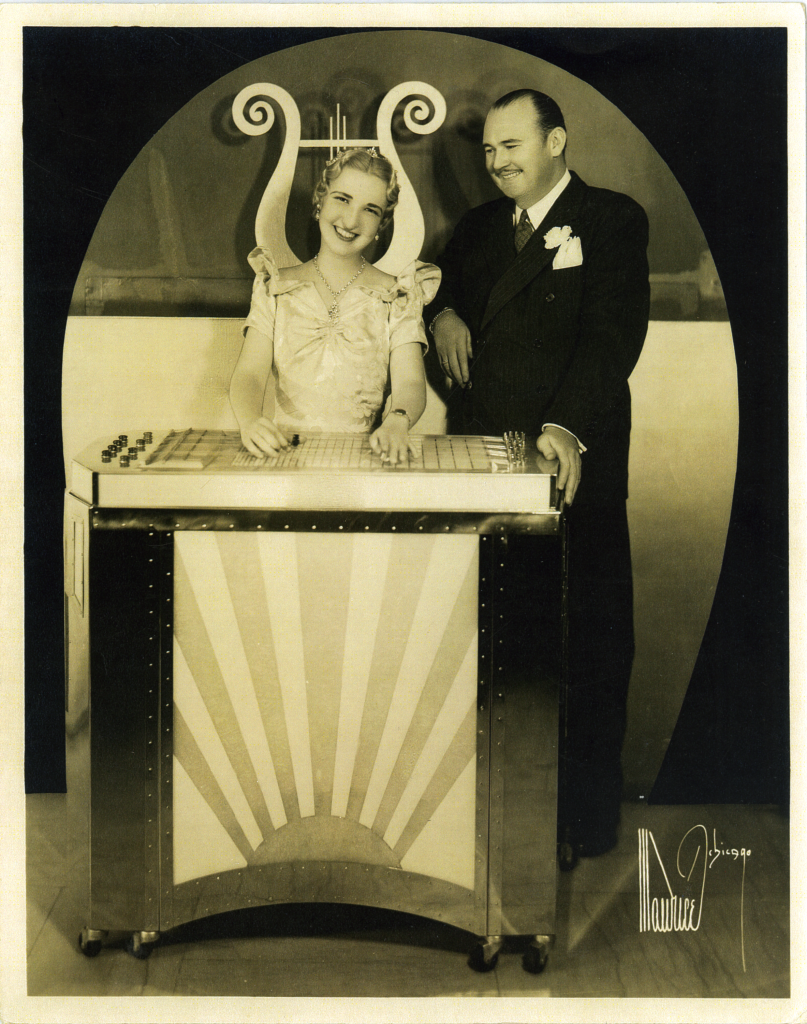26-string National Electric Hawaiian Guitar
During the late 1930s, Kandle was inspired to create an electronic twenty-six string guitar that could provide a colorful visual display as it was played. Under her guidance, Kandle’s father constructed a large console Hawaiian guitar in 1937. The Grand Letar consists of a cast aluminum body with one eight-string and three six-string necks.
The sides are made of wood and covered with chrome-plated steel, and both the front panel and top of the instrument are covered in glass. The National Guitar Company installed the instrument’s electronic pickups and a 20-watt amplifier that used two twelve-inch JB Lansing field-coil speakers. Inside the glass panel is a network of 120 colored lights controlled by a unique electronic flywheel mechanism, a series of four rheostats, and twelve toggle switches developed by Kandle’s father. As the instrument is played, the lights change colors. The combined weight of the large console instrument and its case was nearly four hundred pounds.
Letritia premiered her innovative Hawaiian guitar while performing with the Paul Whiteman Band at Chicago’s Drake Hotel in 1937. The performance was broadcast by WGN Radio throughout the Midwest. While the listening audience could only hear the instrument’s beautiful tone, the Grand Letar’s visual display immediately captured the attention of Whiteman and his musicians. Since her new creation lacked a name, Whiteman named it the Grand Letar based on the first two letters of Letritia’s name and the last three letters of “guitar.”
In 1939, Kandle first spoke about her innovative tuning system for the Grand Letar in a local Chicago paper called The Austinite. She noted, “The tuning was just ‘an act of God,’ entirely without precedent.” In 1944, Kandle explained the tuning in more detail in an article in the Banjo, Mandolin, and Guitar Magazine. Her tuning system, seen below, utilized 26 individual strings tuned in five different arrangements.


